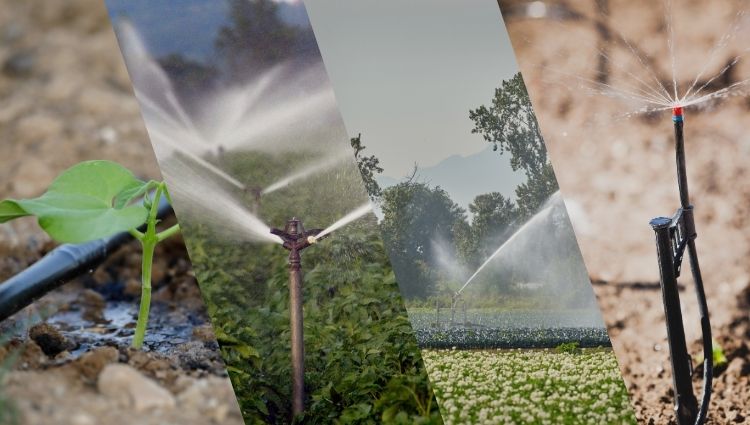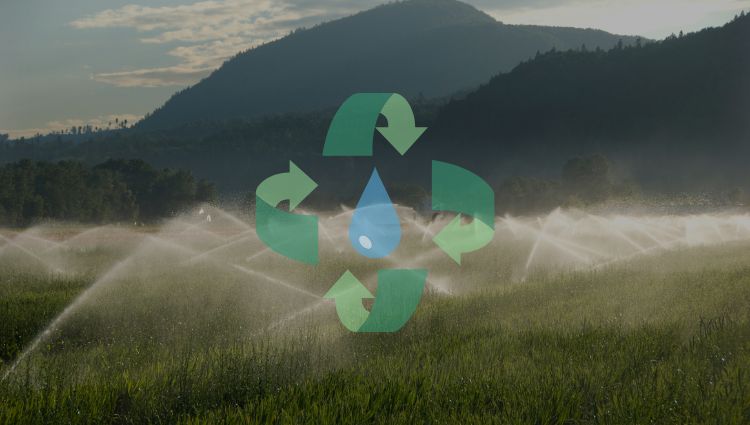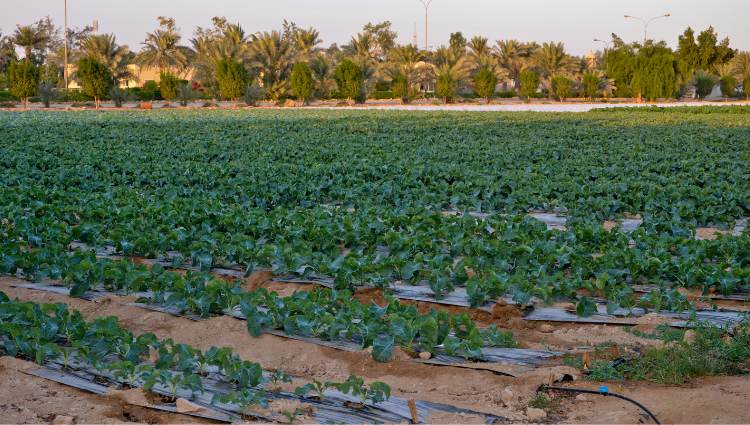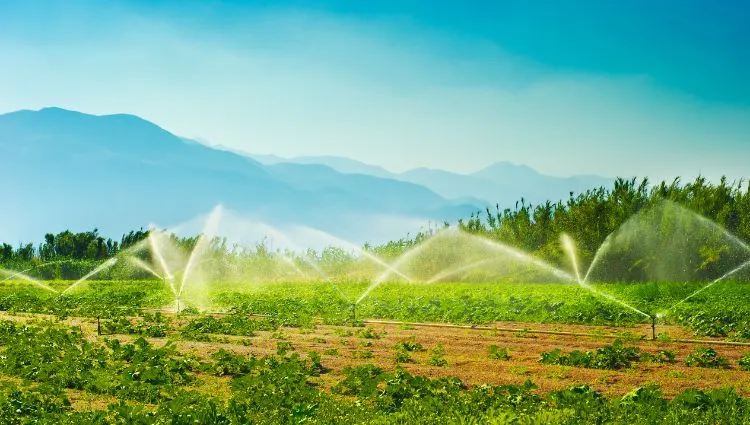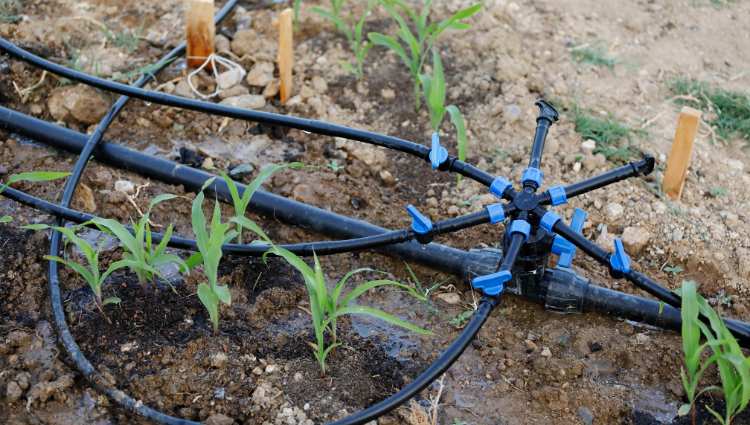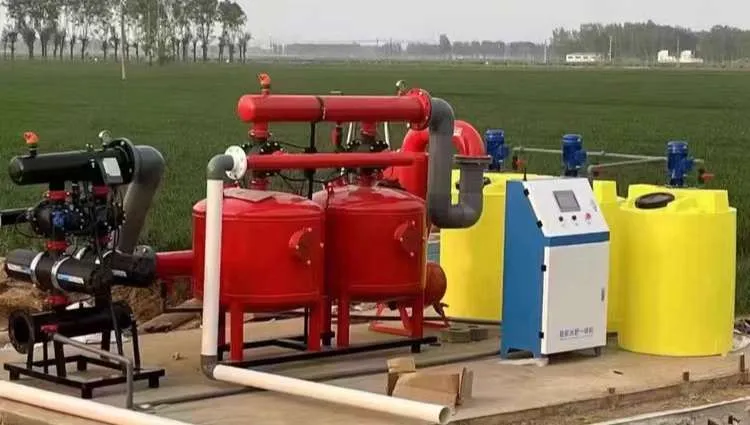目录
在灌溉系统中, pressure is a very important parameter. It directly affects the water delivery efficiency and uniformity in the irrigation pipeline system. 同时, pressure also impacts the service life of irrigation equipment.
This article will explain in detail from four aspects: the pressure in different irrigation systems, the factors that affect irrigation pressure, how to choose the right pressure, and some important considerations.
Pressure in Different Irrigation Systems
Different irrigation methods have different requirements for pressure. There are many types of irrigation methods, such as the commonly used drip irrigation systems, 洒水灌溉系统, and micro-spray irrigation systems.
1. 滴灌系统
Drip irrigation is currently the most water-saving technique among all irrigation technologies because it places pipes and drippers directly near the plants, enabling precise, localized water delivery.
It supplies water in the form of drips, without spraying the water out. 所以, its pressure requirement is also the lowest—generally, a pressure of 0.02 到 0.3 MPa is sufficient.
2. 喷灌系统
Sprinkler irrigation is suitable for large-scale, wide-area irrigation. 例如, large farmland irrigation usually adopts sprinkler systems. Sprinklers require relatively high head and range—in other words, they need to spray water both high and far—so the pressure requirement is relatively high, usually 0.2 到 0.4 MPA.
Many people like to classify sprinkler pressure into levels, such as low, 中等的, and high pressure. 例如, some sprinklers like impact sprinklers and rain guns belong to medium- and high-pressure sprinkler systems. Low-pressure sprinklers, 另一方面, are more often categorized under micro-spray irrigation systems.
实际上, I personally don’t recommend classifying pressure levels, because pressure levels are quite subjective. Everyone has different standards. What might seem like high-pressure sprinkler performance to one person may seem like only medium pressure to another. 所以, the most objective way to compare pressure is by looking at the sprinkler’s range and height.
3. Micro Spray Irrigation System
Micro spray irrigation is a small-scale form of sprinkler irrigation. Its spray radius is generally within 5 仪表, and its working pressure usually falls between that of drip and sprinkler systems, ranging from 0.05 到 0.2 MPA.
The spraying effect of micro spray irrigation also lies between that of drip and sprinkler irrigation. It can spray water over a small area. Although its water-saving performance is not as good as drip irrigation, it is better than sprinkler irrigation. 而且, it is worth mentioning that the water sprayed by micro sprayers has a kind of misting effect. Because of this, products like micro sprinkler heads are used not only in irrigation but also widely in construction projects, since they can help with cooling and dust suppression.
Factors Affecting Irrigation Pressure
There are many factors that affect pressure, so choosing the right pressure needs to be based on different conditions. 以下, let’s talk about some of the main influencing factors.
1. Irrigation Type
Different irrigation methods require different pressures. 例如, as we mentioned above—drip irrigation, 洒水灌溉, and micro-spray irrigation—they all affect how we choose the pressure.
2. Irrigation Area and Planting Density
The larger the irrigation area and planting density, the higher the required water pressure and flow rate.
3. Soil Type
Soil texture also affects the pressure in irrigation pipelines. 例如, sandy soil has very good water permeability, so low-pressure water delivery is sufficient.
另一方面, clayey soil retains water better, so it requires relatively higher water pressure.
4. Crop Demand
Different crops have different water demands. 例如, rice and sugarcane require a large amount of water during their growth process, so high-pressure water delivery is needed to ensure a stable and abundant water supply.
另一方面, different growth stages of a crop also require different amounts of water. 例如, during the fruiting stage of certain crops, water pressure and flow rate need to be increased to meet the crop’s needs at that stage.
5. 水源
The water source has a huge impact on pressure. If the water source is located on flat ground, then we can calculate the pump’s working pressure in a conventional way. If the water source is at a higher altitude, then we need to consider the gravity of water when calculating working pressure. If the water source is in a low-lying area, then the water pump needs to work with higher pressure than usual.
Just determine the pump pressure according to the location of the water source. In actual operation, you can also use pressure-increasing or pressure-reducing equipment to achieve the pressure you want.
6. Irrigation Pipeline
The length and height difference of the irrigation pipeline also affect the pressure. 一般来说, under the same pipe diameter, the longer the pipeline, the greater the frictional resistance of the water flow, and thus the greater the required water pressure.
The height difference of the pipeline also needs to be considered. If there is a significant height difference between various pipes, then the greater the difference, the greater the water pressure required.
How to Choose the Right Pressure
Choosing the correct irrigation pressure can be considered from two aspects: the irrigation method and pressure loss.
As for the irrigation method, we’ve already introduced it above. You first need to identify which type of irrigation system your planting area requires—whether it’s drip irrigation, 洒水灌溉, or micro-spray irrigation. 然后, choose the appropriate pressure based on the irrigation method.
When choosing pressure, we also need to consider pressure loss. You can think about it from three angles: pipe material, pipe length, and pipe size.
第一的, different pipe materials have different levels of friction. 一般来说, the smoother the inner wall of the pipe, the smaller the pressure loss. In terms of length, the longer the pipe, the greater the pressure loss. 大小, the larger the pipe diameter, the smaller the pressure loss.
Once the irrigation method and pressure loss are determined, calculating the pressure will give you a more suitable answer.
Things to Note
In the above section, we’ve already talked quite a bit about pressure. Now, let’s look at three important notes.
1. When choosing pressure, be sure to ensure that the pressure matches the irrigation system. Both too high and too low pressure will affect the irrigation system and crops. 如果压力太高, the pipes and irrigation fittings may burst because they can’t withstand it. 如果压力太低, it may result in insufficient or uneven water supply, or even no supply at all—thus affecting crop growth.
2. Remember to regularly check the irrigation pipes. Pipes are consumables, so they need to be inspected regularly to see if they need cleaning or if there’s any damage. When conditions allow, you can install more pressure gauges in the pipe system, because if there’s a problem with the pipeline, there will definitely be pressure fluctuations. With pressure gauges, we can monitor the system more effectively.
3. Remember to clean filters and similar equipment regularly. Filters remove impurities from the water, making the water inside the irrigation system cleaner. But over time, the filter itself may accumulate a lot of debris, so it needs to be cleaned regularly to ensure the irrigation system runs stably and efficiently.
最后一句话
通过这篇文章, I believe you now have a basic understanding of pressure in irrigation systems. I hope this article gives you more insight.
最后, 请允许我简要介绍我们的公司. Rainfaun是一家总部位于中国的灌溉产品制造商. 我们生产和出口 滴灌 和 洒水灌溉 products, 包括 滴灌阀, 滴灌配件, 滴管, 滴胶带, 滴, 箭头滴落木桩, 洒水器, 微洒水器, 雨枪, 筛选, 阀门, 放置平坦的软管, PVC管配件, PP配件, BSP线程配件, 还有更多. 您可以找到更多信息 关于Rainfaun 和 我们的产品 在此网站上.
If you’d like to work with us, 你可以 点击这里 填写表格.
作者: 艾伦, 迈克尔
编辑: 迈克尔
内容审阅者: 迈克尔
